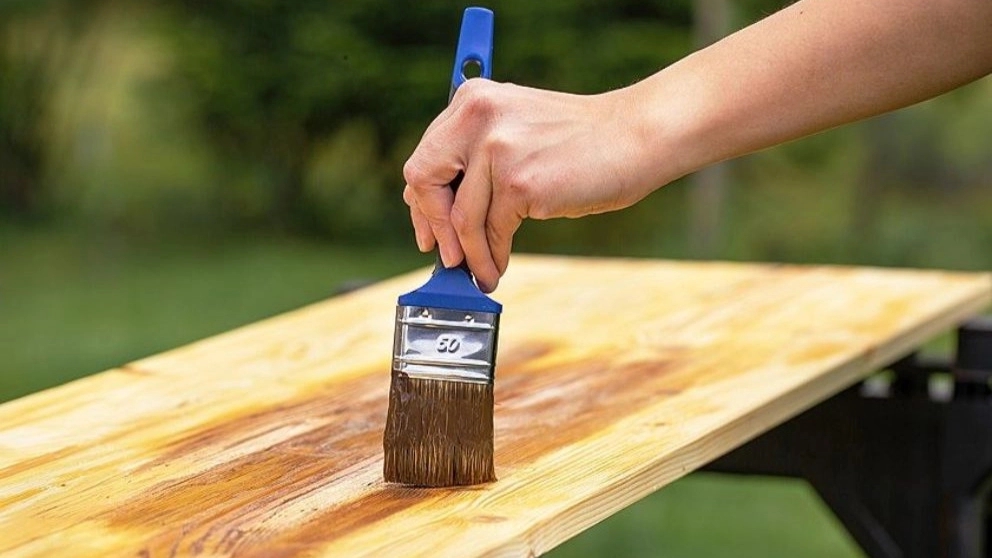Special color for wood
There are different types of wood color and there are different ways to apply wood color. The first question that comes to everyone is choosing the right color for the wood project and how to apply it on the wood. Choosing the right color depends on the type of structure, weather conditions, taste, etc.
instant color
Instant wood paint is made from alkyd resin and cellulose nitrate and is a product with high flexibility and adhesion, gloss and durability. This color is one of the most used colors for painting wooden artifacts with high drying speed, good quality and gloss. This product is used for painting furniture, wooden parquet, wooden doors, wooden fences, tables and chairs.
nail polish alcohol
The best material for polishing wood is alcohol varnish, which dries very quickly and penetrates well into the wood texture and increases its durability. There are different types of varnish, each of which has its own unique characteristics. The biggest weakness of this material is its tendency to turn yellow over time, which is mostly seen on light-colored wood. To modify the varnish and prevent it from turning yellow, acrylic is added to the composition of the varnish. This product has the same properties as ordinary nail polish, with the difference that its color is clear and does not turn yellow over time.

wax
Some do not consider wax or wax to be a suitable coating for wood. Wax is mostly used to polish furniture or other surfaces; In this way, after polishing the wood with shellac or alcohol varnish, a layer of wax is applied on it.
varnish
Varnish consists of durable and hard synthetic resin that is modified with drying oil. Varnish consists of alkyd, phenolic and urethane, linseed and linseed oils, as well as semi-drying oils such as soybean oil and kajireh (safflower oil).
sealer
One of the most widely used materials for painting and polishing wood is sealer, which is used to impregnate wood. Since the texture of wood has pores that must be saturated in order to absorb the color well, a suitable material must be used to saturate it. Also, by using sealer and sanding afterwards, you can remove fine fibers and lint on the surface of the wood.
Keeler
After sanding the sealer, it's time for the killer. Killer is a transparent color that is applied to the wood with a brush or gun to cover it after the sealer. The killer is available in two types, glossy and matte, it is diluted with thinner and is performed in several steps like the sealer. Like the sealer, the killer must be applied to the wood in several stages and finally sanded. Of course, in some cases, killer is used in the last stage of coloring.

What is a thinner?
Thinner is a type of diluent and is made by mixing several solvents together. This material is selected based on the type of paint and is a suitable solvent for preparing paint, and the amount of combination of this product with paint depends on the desired surface, paint concentration, painting tool, atmospheric and weather conditions. One of the main uses of instant thinner is in the wood industry and furniture painting. Thinner can be very effective in improving the properties of the paint, and choosing the right material can have a significant effect on the brushability, sprayability, drying speed of the paint layer, and many other properties of the paint.
Thinner solubility It is the same capability and dilution rate; In other words, the higher its solubility, the thinner and smoother the color will be. The evaporation speed of the thinner is directly related to the drying time of the paint; Because with the formation of a layer of paint on the surface, the thinner must gradually evaporate and be removed from the surface. The flash point of any combustible liquid is the lowest temperature at which the vapors of that liquid ignite with a small flame or spark. The ignition point of the thinner determines the severity of the fire risk, which should be taken into account when storing, transporting or using the thinner. In addition to the risk of ignition, thinners are also environmentally dangerous for humans and the environment because they dissolve natural oils and cause skin damage and discomfort and are absorbed by the body through the skin. In addition, breathing the vapors of this substance can cause serious injuries.
Types of thinners
Instant Thinner
Instant thinner with high solubility is suitable for diluting instant paint, nitrocellulose, sealer and killer. Thinnerfuri is an ideal solvent for air dry paints. This product is colorless and has a pungent smell, and it is called instant because of its high speed. This thinner is a combination of acetone, white spirit, etc.
Alkyd thinner
Alkyd thinner, which is also called oil thinner, is used to dilute paints. Resin-based oil is used and is usually a substitute for oil in works. This thinner is divided into two industrial and construction categories. The pungent smell and low evaporation rate of this solvent may slow down the work. The density of oil thinner is higher than instant thinner, and because this construction thinner is used indoors, it should be suitable for working indoors in terms of smell and toxicity. The point that should be taken into consideration when choosing and preparing building oil thinner is that it should be colorless and transparent; Because it is used to paint bright colors.
Epoxy thinner
As its name suggests, this thinner is for diluting epoxy paint. Also, this thinner is used for washing spray and painting equipment. Epoxy thinner has a cellulose agent and is suitable for diluting epoxy paint, paint and epoxy primer.
Polyurethane thinner
Polyurethane thinner is very similar to epoxy thinner. and is used to dilute polyurethane paint.

